As a historical paradigm anchored in Western tradition, Sparta has been the subject and setting of many historical novels. In this article we will show how, unlike the different images of the city of Eurotas created by other literary genres, the novel has focused almost exclusively on the sublimated Sparta that has embodied the heroic struggle for freedom (Greek and, by extension, European) against the tyranny and oppression represented by the East, which is paradoxical in a polis that had turned the Messenians into slaves (hilots).
We will start with the Victorian era, in which we have some relevant examples. Edward Bulwer Lytton, historian and novelist (author in 1834 of the famous The Last Days of Pompeii ), wrote Pausanias the Spartan , a novel that was published unfinished by Lytton's son when he died in 1873 and that focused on the figure of the regent Pausanias, winner of the crucial battle of Plataea against the Persians that closed the second medical war, but that revealed a hybridistic, tyrannical and paradoxically orientalizing behavior during his subsequent government in Byzantium.
Coming from the pen of a politician (Lytton was parliamentarian for Huntingdonshire in 1831 and Colonial Secretary in 1858, as well as Baron and Peer of the Kingdom), the work aims to be a reflection on the ambition for power, both for the individual and for himself. state, and on timeless themes like loyalty and betrayal. In fact, his Pausanias is a politician ahead of his time insofar as his medism (sympathizing with the Persians) is a pose, he shows greater empathy towards the helots and greater criticism towards the intellectual deficiencies of his countrymen, while his political approaches walk by the negotiation of a treaty with Persia that would allow Sparta to keep Athens under control, events that would historically take place, as Lytton well knew, in 386, with the so-called Peace of the King or Peace of Antalcidas, which consecrated Spartan hegemony in Hellas.
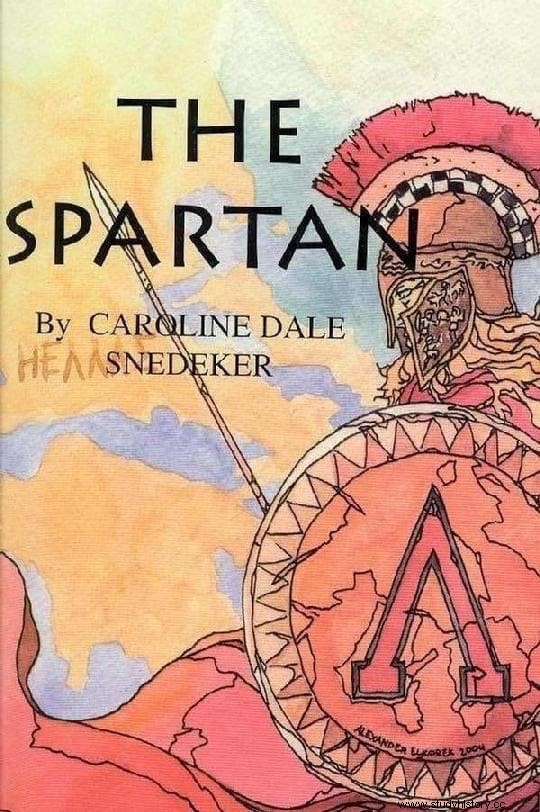
Virtue and patriotism versus evil and betrayal is also the axis on which the novel Un victor de Salamina turns. An account from the times of Xerxes, Leonidas and Themistocles (1907), by William Stearn Davis, with a tangential role of the Spartans, subsidiary to that of the Athenians.
In 1910 John Buchan made an Aegean cruise in the course of which he landed at Thermopylae; The idea of writing El lemnio was born from the feeling that overwhelmed him. (1911), in which a native of the island of Lemnos enters the Spartan camp and feels compelled to fight with them against the Persians.
That same year, 1911, Caroline Dale Snedeker published The Coward of Thermopylae , later renamed The Spartan , whose hero Aristodemus only gives meaning to his life in the defense of Thermopylae, or what amounts to the same thing, of the freedom of Greece against the threat of Eastern barbarism ("no one but a Greek could give such a conception idealized such a passionate devotion"), so that according to the North American novelist, Western civilization owes a perennial debt to those men.
In 1928 the long-lived and prolific Scottish author Naomi Mitchison, a pioneer of feminism, published Black Sparta , a series of interconnected stories and poems in which she reflects the life and suffering of the helots, but also the Spartan self-awareness of the legitimate nature of their exploitation, without the author taking sides with one or the other (she is interested in the characters and its vicissitudes, not the phenomenon of slavery).
Two years earlier Mitchison had published Cloud Cuckooland , whose title reproduces the word invented by Aristophanes (in Greek Nephelocoquigia ) to nominate the idyllic and unreal city founded by the two protagonists of the comedy Las Aves , Pisteteros and Evélpides, and that in English is used in phrases like you live in Cloud Cuckooland , equivalent to the Spanish «you live in the clouds», that is, far from reality; The book is set in the Peloponnesian War and deals with the differences and hostility between Athens and Sparta, seen as a city where life can be very hard and cruel.
In 1931 Mitchison would return to the Spartan theme in The Grain King and the Spring Queen , about the reforms of a king Cleomenes III whom she now presented more favorably to the helots, in tune with the socialist theses of the moment.
In 1961 John Burke wrote the novel The Lion of Sparta from the script for the homonymous film produced in Hollywood, with which he shares identical ideological presuppositions; the book's publicity stresses that the three hundred Spartans 'were not ordinary men. For them there was no retreat, no surrender. His highest expectation, a glorious death."
A year later, Roderick Milton, in the same pre-war atmosphere of the cold war, novels the defense of Thermopylae in Say it in Sparta , in reference to the epigram of Simonides that served as an epitaph for Leonidas and his epitaph:«Walker, go and tell Sparta that here we lie in obedience to his commands»; Milton did so because he understood "a lesson for our own time that of this small but free people in their desperate struggle for freedom against the vast forces of a totalitarian state." 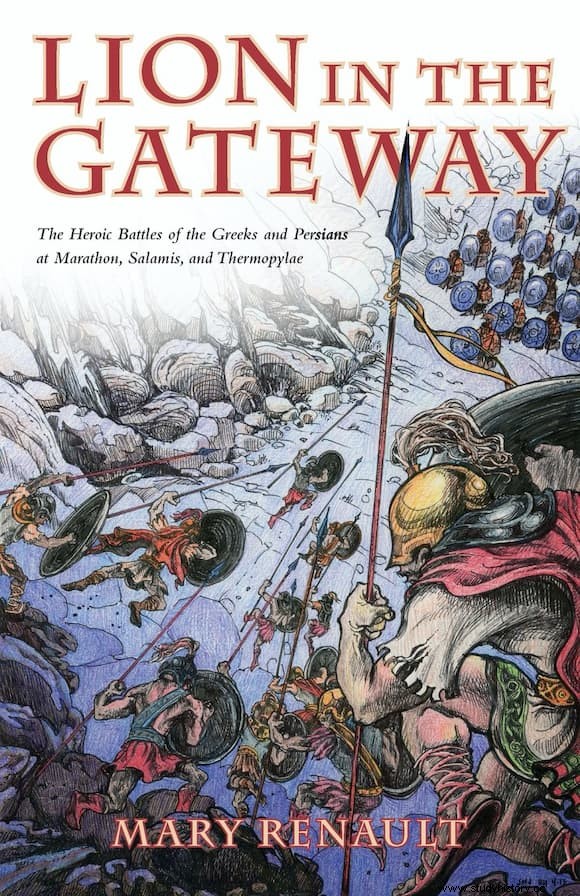
Aimed at children, in 1964 Mary Renault wrote the book The Lion at the Gates. The heroic battles of the Greeks and Persians at Marathon, Salamis and Thermopylae , a didactic dramatization of those great Hellenic victories.
In recent decades, the flow of novelized stories about Sparta has been incessant, all of them built without exception on the distorted image of a militarized and culturally almost sterile society that instills through blood and fire in its citizen-heroes the ideal of sacrificing themselves in the field. of battle for the benefit of the community.
In 1980, the British novelist Ernle Bradford popularized the second medical war in The Year of Thermopylae (in the USA it was titled Thermopylae, the battle for the West ), where it sticks closely to the classical tradition, although marked by parallels with the Second World War, with Sparta in the role of Nazi Germany.
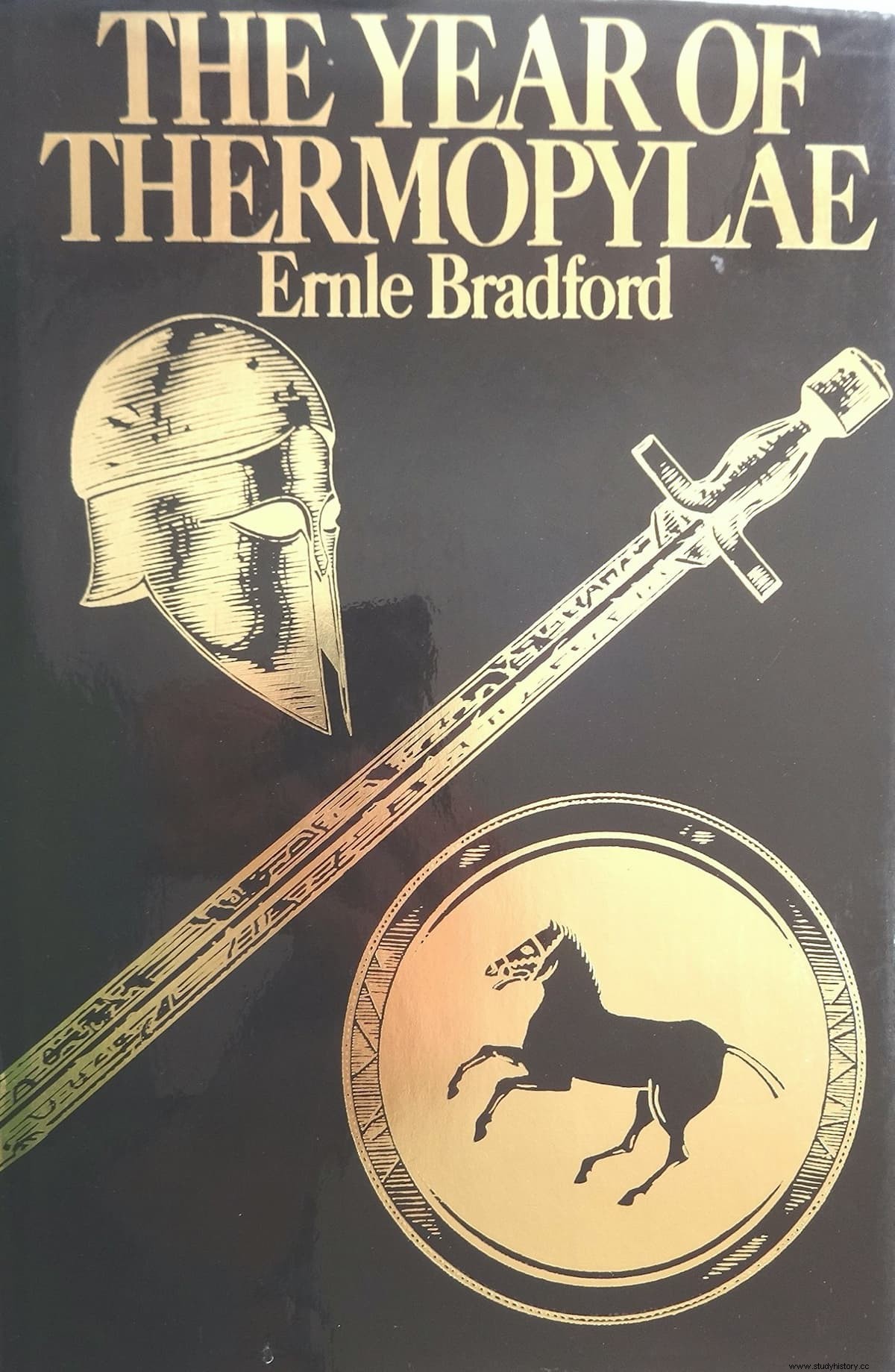
Six years later it would have a considerable acceptance among the general public Talos de Esparta , by Valerio Manfredi, professor of Classical Archeology at the Luigi Bocconi University of Milan, which also sets it in the period of the Persian Wars and which presents the novelty of being narrated for the first time from the perspective of a helot, Talos; Talos was actually born a Spartiate under the name of Clydemus, but was abandoned as a cripple, saved from his cruel fate, and raised by the Helots, to finally overcome his handicap, prove his worth, and be restored to his former status (that is, a typical novel or adventure film script).
A great qualitative leap will come with the success achieved by Gates of fire (1998), by professional novelist Steven Pressfield, bestseller in the United States and Great Britain that it even appears among the recommended readings of the United States Marine Command and is considered a true bedside book for those stationed in Iraq and Afghanistan ("Weapons and tactics evolve, people are the same", assures a marine captain in The Washington Post on 7/17/2005).
It was not for nothing that Pressfield served in the 2nd Battalion of the 6th Marine Corps (he did not see combat, but he did undergo the harsh preparatory training for it), whose members called themselves The Spartans and tattooed on their forearms the lambda of the Lacedaemonian shields. To intensify the realism, Pressfiel is particularly crude in depicting the physical and psychological horrors of the battlefield, while using extraordinarily violent and shocking language, stylistic devices that help deglorify the sacrifice of the dead. Spartans.
But the structure of the story could not be more classic:a main narrator, the Greek Jeones, the only survivor of Thermopylae, responds to the curiosity of the Persian royal historian, Gobartes, about the way of life of those amazing Spartan warriors (just like Demaratus illustrated Xerxes in the text of Herodotus) and, between the two, with the help of other secondary narrators, they recount the war events before and after the battle, intertwining them, in the midst of jumps in time and space, with the experiences and lives of the characters.
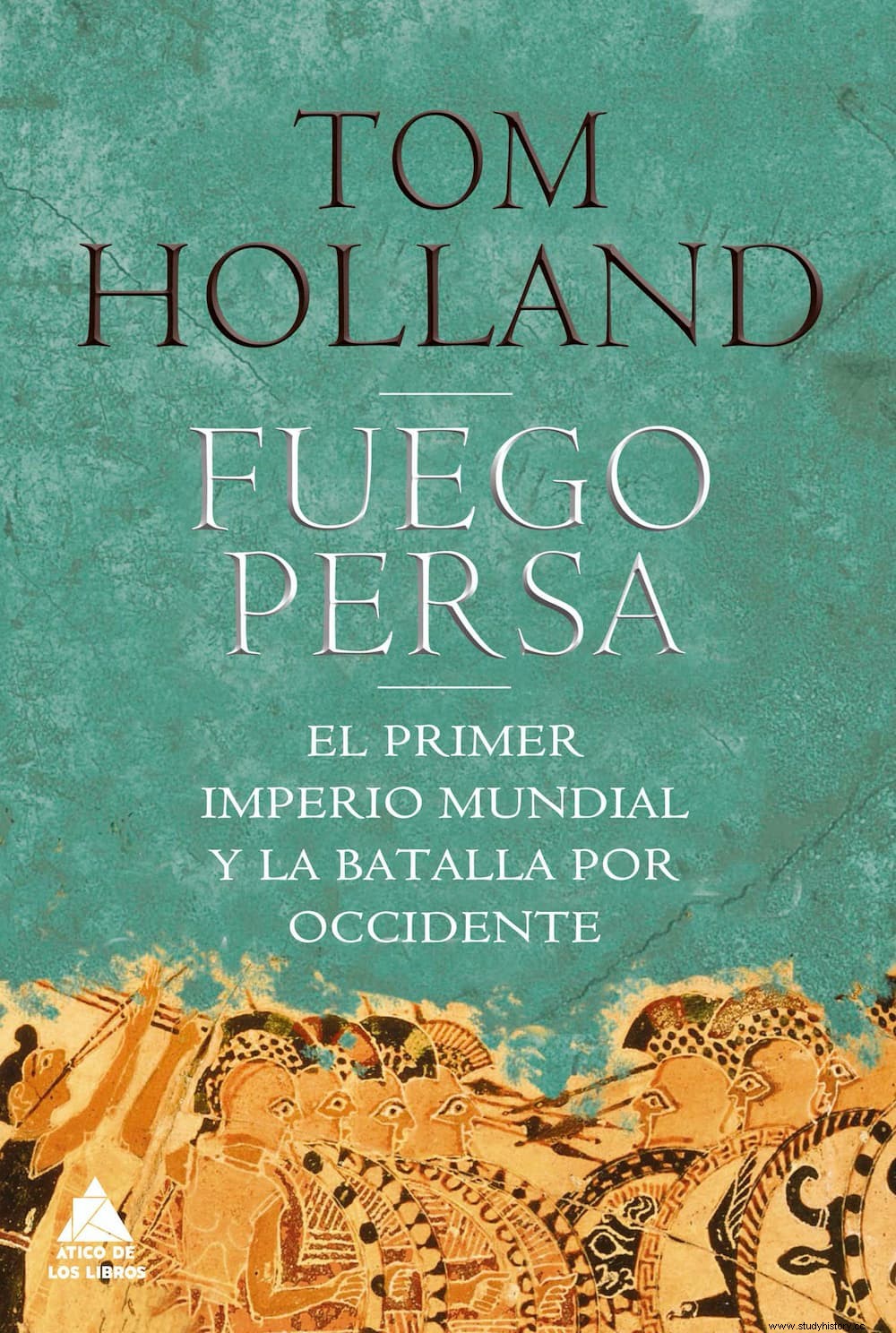
In 2005, the medical wars are again the plot of another editorial success, Persian Fire. The First World Empire and the Battle for the West , which Tom Holland poses as a clash between East and West in which «had the Greeks been defeated at Salamis, the West would not only have lost its first fight for independence and survival, but it is unlikely that it would ever there would have been an entity like the West at all «.
In this sense, the events of September 11, 2001 have fueled the demand for knowledge, and at the same time legend, by the general public (particularly the Anglo-Saxon) about a people that has been presented to them as worshipers of war. and of death, along the lines of what has been called "popular history." Some scholars who are not unrelated to political interests have joined this literary trend, such as Victor Davis Hanson, who in 2002 published a study in which he intended to examine the phenomenon of war from Salamis to Vietnam and to which he gave the explosive title of Why the West Has Won, stripped of the controversial burden of it in the Spanish translation as Matanza y cultura. Decisive battles at the rise of civilization .
Hanson culminates it in the following triumphant manner:Western civilization has given humanity the only economic system that works (capitalism), a rationalist tradition that allows us material and technological progress, the only political structure that guarantees the freedom of the individual (democracy), a system of ethics and religion that brings out the best in human beings, and the most lethal practice of weapons conceivable (the hoplite tactic), in which what he calls the “Western model” would sink its roots. of war."
A novel that offers a very different account of what happened in the gorge is 300 warriors (2007), by Andrea Frediani, whose narrator is an Aristodamus (the only survivor of the three hundred) who not only does not aspire to glory, but also denies his king, his polis and his culture.
Among the latest novels that have reached the bookstores we also find the following:Under the aegis of Ártemis (2004), by Jon Edward Martin, a fictionalized biography of the charismatic general Brasidas, hero of the Archidamic war, never better said, as he was buried in the agora and received heroic worship in Amphipolis, after his death in this city of Chalcidice; from that same year is The girl from Sparta , by the French writer of Spanish origin Cristina Rodríguez, which incorporates the gender perspective through the protagonist, Thyia, who cross-dresses as a man to enter the Spartan army and live, as a servant, adventures and passions, among the that the Battle of Thermopylae is told; The man from Sparta (2005), by the Valencian Antonio Penadés, which, with the structure of a Greek tragedy, nevertheless has as its setting the city of Athens on the eve of the Peloponnesian War and as its knot the vicissitudes and changes experienced by the Athenian Isomachus through of his rivalry with the Spartan Alcinous; Sons of Sparta (2005), by Nicholas Nicastro, a recreation of the first defeat of the Spartans, on the islet of Sphacteria, against the Messenian Pilos, when according to the author "they ceased to be more than human and became mere men"; Sons of Heracles. The Birth of Sparta (2010), by the Sevillian Teo Palacios, set in the most archaic Sparta and whose common thread is the wars against Messenia abroad while in the interior there are intrigues and rebellions in the court of Theopompus and Anaxandridas, the first of which he identifies, thanks to literary licences, with Lycurgus, architect of the Lacedaemonian constitutional and social order; Sparta Earrings (2010), by Lluís Prats, which is announced as "a story of the most courageous men who have walked the Earth, immortalized by the memory of a woman" and in which, curiously, it is the fear of the Persian, and not the danger of helot uprising, which has made Sparta what it is now, on the eve of the Peloponnesian War, when there is no time for music and poetry;The End of Sparta:A Novel (2011), by the aforementioned Victor Davis Hanson, is a fairly epic but plausible recreation of the battles designed and won by the "democratic" Theban general Epaminondas (especially that of Leuctra, in the year 371) against the "dictatorial" Sparta, whose hegemony in Greece will be ruined forever;The Queen of Sparta (2014), by the Pakistani Tariq Chaudhry, grants Gorgo, daughter of Cleomenes I and widow of Leonidas, a modernized female leadership in the defense of Greece after the death of her husband; the shortlisted novel for the Planeta Prize 2016, The assassination of Sócrates , by Marcos Chicot, takes place mainly in the settings of Athens and Sparta during the Peloponnesian War, with a commendable reconstruction of both societies and the problems they experienced as a result of the exhausting conflict.
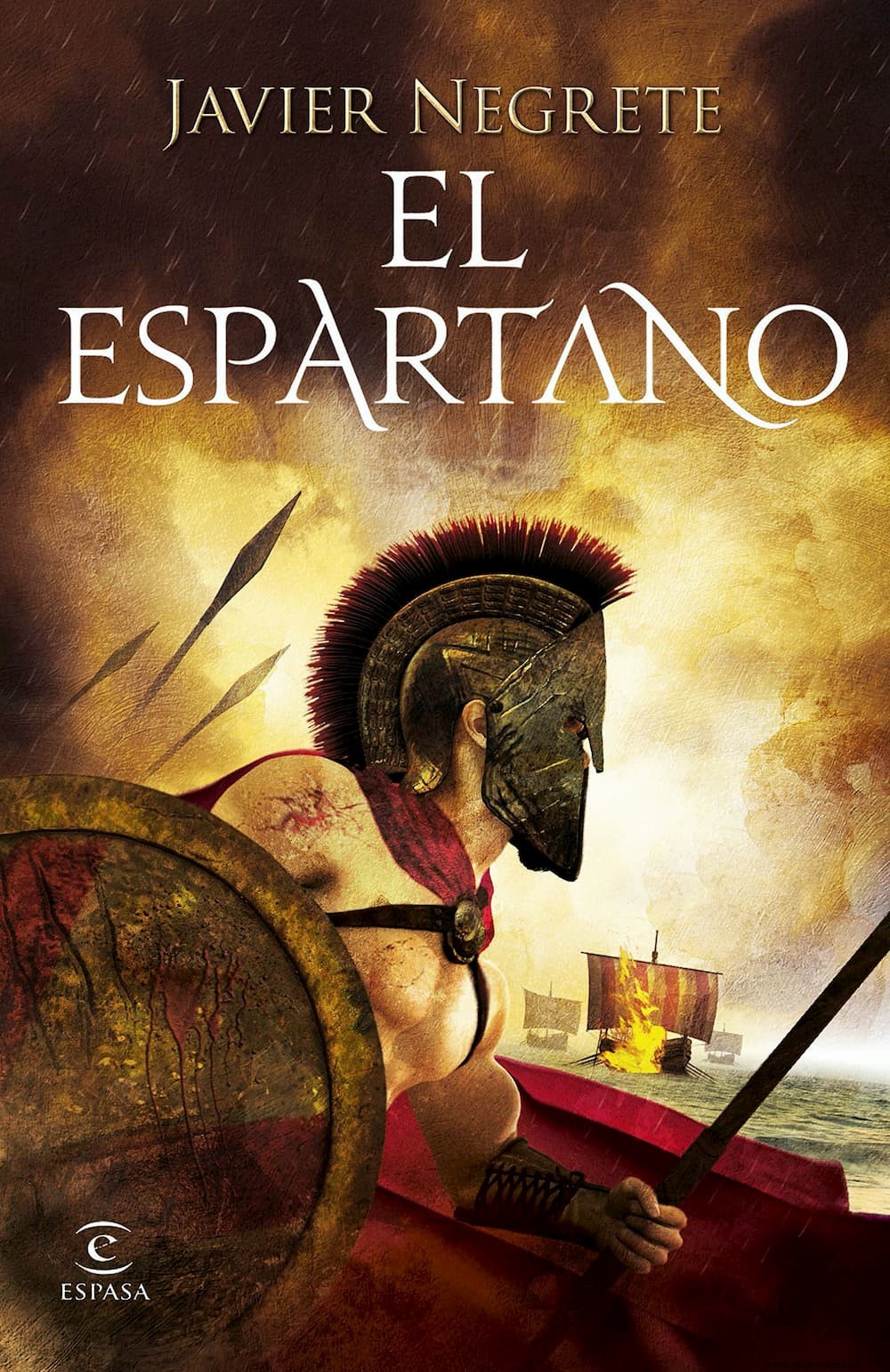
And the last one we know of is that of Javier Negrete, entitled El espartano (2017), which flows from the sacrosanct setting of Thermopylae to recreate the troubled life of Alastor, son of the exiled King Demaratus, who was denied his right to the throne and the love of Gorgo in order to turn him into an ordinary Spartan.
In this fictional imaginary, Sparta can even be outside of Sparta, as in Amazons of the black Sparta. The warrior women of Dahomey (1998), by Stanley Alpern, about an African kingdom of the eighteenth and nineteenth centuries, a black Sparta populated by warrior Amazons who shared with Greek Sparta its militarism and collectivism (although the Dahomey Amazons killed male soldiers) until that disappeared in 1892 before the French colonial power.
Even a renowned specialist in Spartan history, society and culture, Paul Cartledge, brand new first A.G. Leventis Professor of Greek Culture at the University of Cambridge, he has been seduced on more than one occasion by the siren songs of the industry and, in addition to advising the BBC, the History Channel and Channel Four on their television documentaries on the Greeks and, particularly , the Spartans, has signed an informative book entitled The Spartans plagued by the stereotypes against which he has fought in his scientific production:he speaks, for example, of "a powerful and unique people, radically different from any previous or later civilization" and defines Lycurgus as "a mix between George Washington and Pol Pot », without missing speculation and the occasional anachronism (politicians and/or generals from the left and right, for example), but which has had an excellent reception and has even become part of the "equipment" of the Marines Americans in their training stage (according to news published in The Times on 8/27/2008).
The distinguished historian from Cantabria, who is an honorary citizen of the modern city of Sparta and has received the Golden Cross of the Order of Honor from the President of the Republic of Greece, has also written Thermopylae for the general public. The battle that changed the world (2006), a pseudo-fictional reconstruction of "the battle between civilizations"; the confrontation between West and East is always present, although without the pamphleteering and proselytizing charge that is achieved with Hanson (it is significant that Cartledge dedicates the book to the memory of his sister, who died in the London terrorist attack on July 7, 2005 ).
Similar epic timbres, destined to move and overwhelm the reader under the weight of so much glory, cover the Leonidas. Hero of Thermopylae (2004) by Ian MacGregor Morris, within a highly popular collection entitled Leaders of Ancient Greece , or the two quite uncritical and simplifying booklets by José Alberto Pérez Martínez:Sparta:the battles that forged the legend , for Ediciones Xpartan (2014), and Spartans:the men who forged the legend (2014). Informative collection with a large number of followers, who, however, do not give up a certain academic requirement, is the Osprey Library of Greece and Rome , in which the shadow of Sparta is naturally elongated; in it, for example, appraised and without being blinded by the myth, the organization and recreation of the Lacedaemonian army is presented (with abundant plates) carried out by Nick Sekunda in Spartan Warriors (2009), but Philip de Souza also achieves a meritorious symbiosis of scientific and commercial interests in From Marathon to Platea (2009) and Nic Fields in Thermopylae (2011), the latter also included in the Osprey Library of Great Battles .
"Holocaust at the Hot Gates" bellows the statement of the prologue by this same author, Fields, in his recent synthesis The Spartan way of life (2013), which presents the Spartans as a people who make war their way of life, the only meaning of their existence, perhaps because of being inserted into a military history collection (Pen &Sword Military). Disappointing, and I would almost dare to say unworthy of a magnificent publisher like Les Belles Lettres, is The true story of the Spartan heroes (2010), a bombastic title that hides a mere juxtaposition of texts (compiled by Jean Malye) without any comment, as if what was written by authors of very different times, nature and credibility were taken for granted, and even with serious errors in the statements .
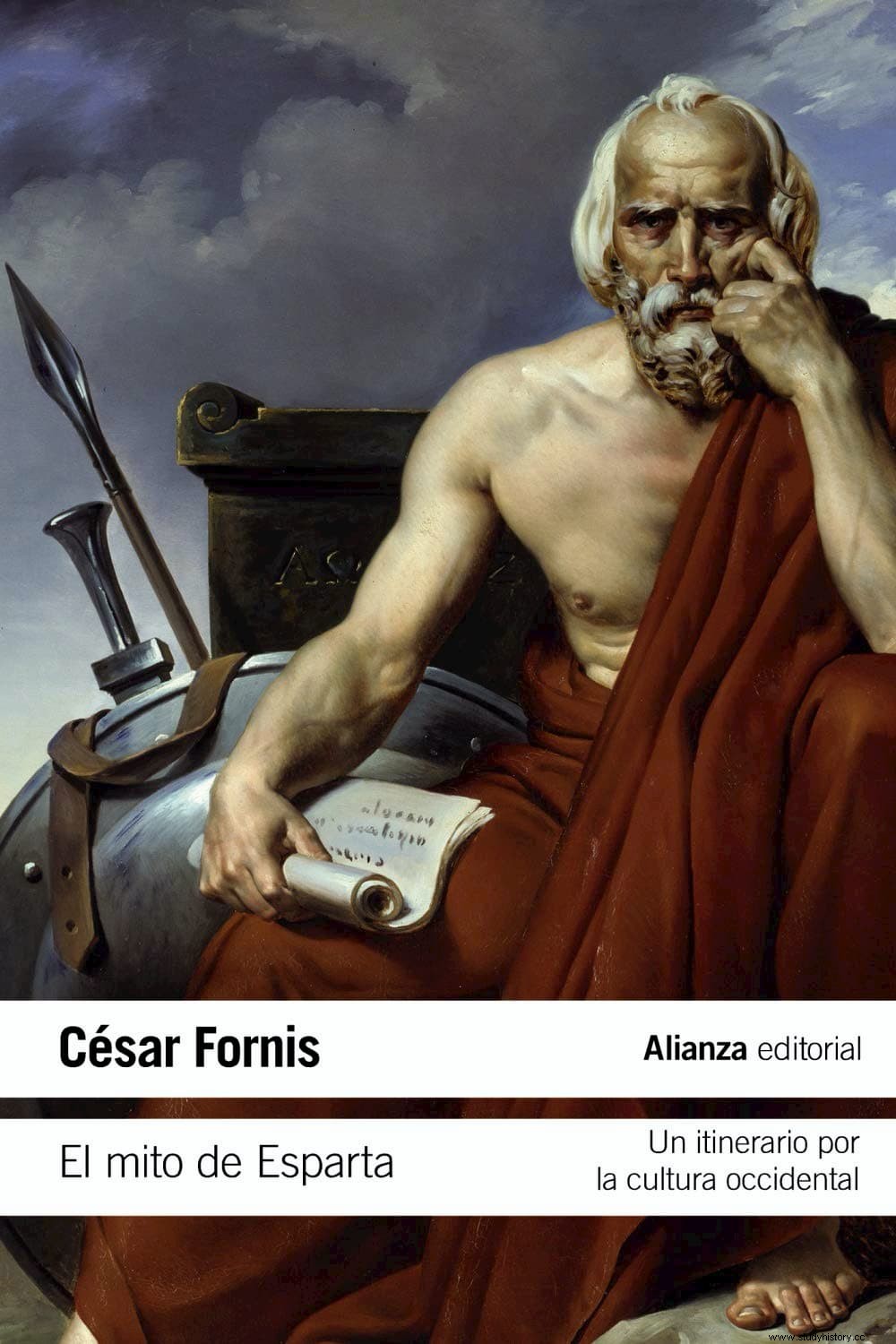
At the end of this journey through the novels of the 19th, 20th and 21st centuries that have either dealt with an episode in the history of Sparta or have been set in the city itself, with some foray into scientific dissemination, it can be concluded that with few exceptions, the projected image is much more unequivocal than in other literary genres, such as the historiographical, the biographical or the philosophical. The recurrent Sparta has been that of the brave, disciplined and courageous warriors, capable of reaching the ideal of the kalòs thánatos or "beautiful death" sacrificing herself for freedom (Greek and, by extension, European), the Sparta that has left the exemplum Leonidae alive forever , from Thermopylae to Stalingrad.
Documentation
I have recently dealt with the Spartan paradigm throughout Western tradition and history, from Antiquity to the present day, in The Myth of Sparta. An itinerary through western culture (Pocket Alliance, 2019), where the reader will be able to verify, if they wish, the enormous vigor that ancient Sparta has in other media of the so-called popular culture, in addition to the novel (cinema, television, comics, dissemination, video games, video clips, sports, fashion...).
